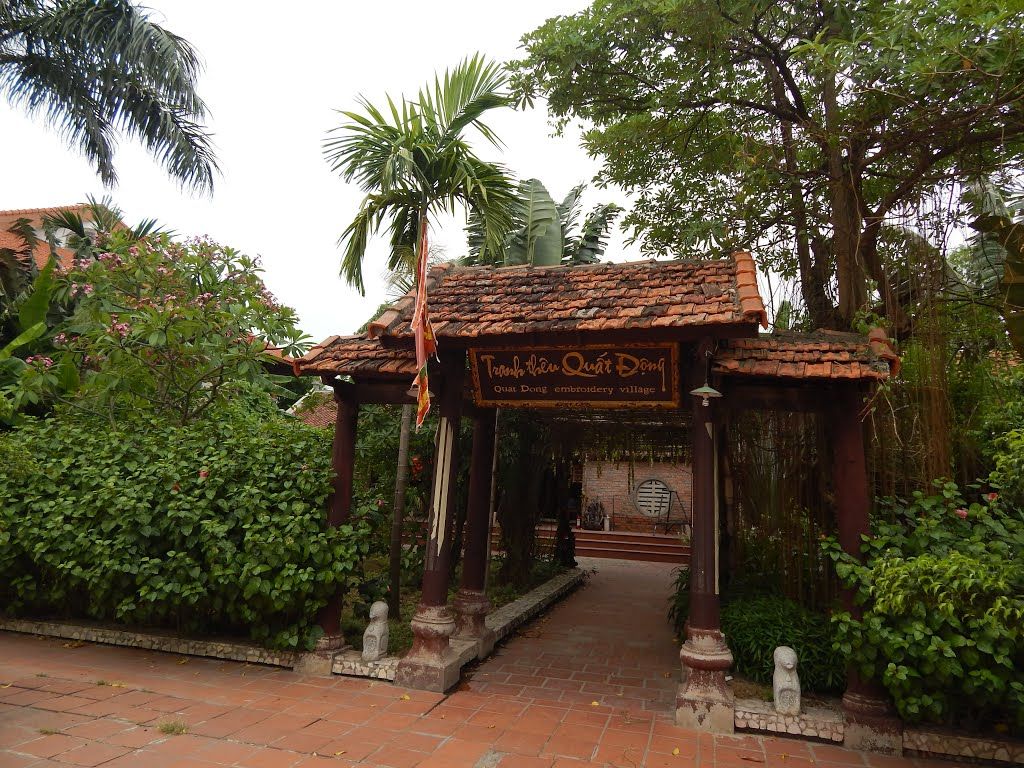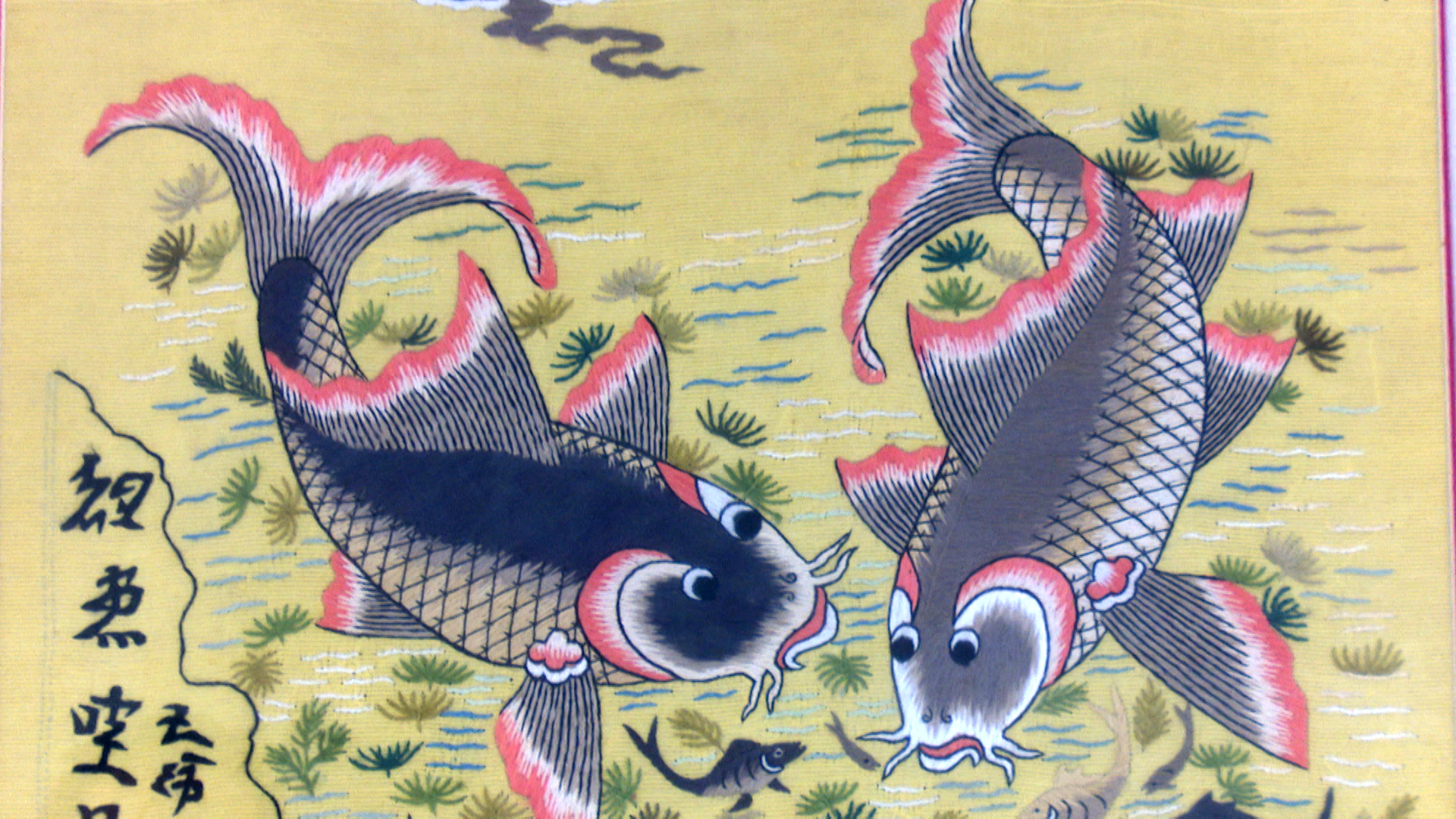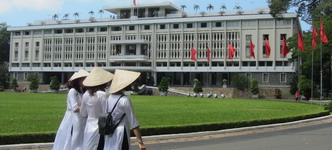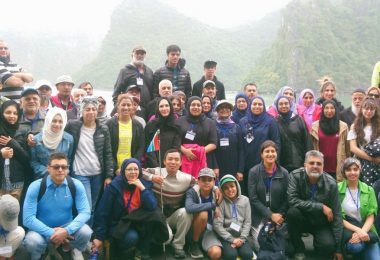Overview:
Embroidery is available in many places, but to reach a sophisticated and skillful level, it is impossible not to mention Quat Dong embroidery village (Thuong Tin, Hanoi) – the ‘cradle’ of traditional embroidery.
Location:
About 25km from the center of Hanoi, Quat Dong village (Thuong Tin district) attracts tourists from far and near not only by its beautiful natural landscape, shady banyan trees, and ancient and moss-colored temples but because of the uniqueness hidden in each hand-embroidered work. From fabrics, colorful threads, talented hands and minds of Quat Dong artisans have created works that conquer customers from far and near.
History:
At the beginning of Quat Dong village is the temple of Le Cong Hanh, the village’s embroidery ancestor and also the country’s embroidery ancestor. According to historical records, Dr. Le Cong Hanh, whose real name is Tran Quoc Khai. He was born in 1606 in Quat Dong village, Thuong Phuc district, Thuong Tin district, Son Nam town (now Quat Dong commune, Thuong Tin district, Hanoi). In 1637, he obtained his doctorate and became an official under the Le dynasty. In 1646, he went to the Ming dynasty. During this time, he learned the Chinese way of embroidery and then returned to teach the people of his homeland. In recognition of his contributions, many places take the date of his death (June 12 of the lunar calendar) as the anniversary of the embroidery ancestor’s death anniversary.
To make an embroidered picture, you must first draw a pencil sketch on the canvas. These can be beautiful flowers and trees (pine, chrysanthemum, apricot bamboo, peach orchid, peony…), scenic spots (One Pillar Pagoda, Ngoc Son Temple, Ha Long Bay…), or activities. Farmer’s production activities (farming, planting, plowing, fishing, weaving…) are sometimes portraits. Quat Dong embroidery uses embroidery techniques including head-to-head embroidery, cross-stitching, thrusting, indentation, tarpaulin binding, punching, knotting, sizing, embossed, brocade, etc. Among these techniques, embroidery is embossed and the most elaborate tinsel, requiring the thread to be tight and straight; soft curves, clear shapes; The form must be balanced, bright, close to life… Depending on the content of the painting, the artist uses more or less colors only. The work of embroidery does not require much effort, but it requires a lot of techniques, especially skillful hands with refinement in each needle and a delicate sense of color, a sensitive soul. , vibrate before beauty and convey that beauty into every detail to create a lively, delicate and harmonious work. Depending on the difficulty and size, a product can take from a few days to a few months to complete.
Process:
Along with the fluctuations of history, Quat Dong embroidery also has ups and downs. In the 90s of the last century, the profession developed strongly with many workshops with 200-500 people working. Products are mainly exported to Eastern European countries. When the country entered the period of market economy, craft villages decreased in a number of workshops and workers. Despite the difficulties in the output of products, many Quat Dong people still love the profession and are determined to keep the job with good hopes for the future.
Quat Dong’s love for the profession was rewarded when the profession was gradually restored and developed again, affirming its prestige in the market, and helping people’s lives become more stable. For Quat Dong people, embroidery has become an indispensable part of daily life. Next to the embroidery frames, the elderly and children diligently work. Inheriting and developing the traditional craft, Quat Dong has many famous artisans in the country such as Bui Le Kinh (who used to embroider royal costumes for King Bao Dai and Queen Nam Phuong), Thai Van Bon People’s Artisan. , the only person in the embroidery village to be conferred this title. He is the author of the embroidery painting of Thai king Phu Mi Bon A Duan Textile, a valuable work of art in the Thai royal collection.
Life is developing more and more, like many other professions, embroidery is also modernized by industrial embroidery machines. However, Quat Dong hand embroiderer still maintains the traditional way of his father. Quat Dong hand-embroidered paintings still have their own voice in the market. It cannot be confused with mass industrial embroidery products because of the uniqueness, affection and enthusiasm that each artisan has put in each needle, because each product contains love, passion, and love. Respect and pride in the profession.









































